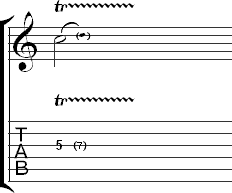How Hammer-Ons and Pull-Offs Are Notated in Tab
Hammer-ons and pull-offs allow several notes to be played for every time a string is picked with the right hand. Both techniques are indicated by a curved line (called a slur) above the affected notes.
Hammer-ons
A hammer-on is played by first playing a note and then playing a second, higher-pitched note by forcefully bringing another finger down on that note to make it sound. Hammer-ons may be indicated with just a slur:
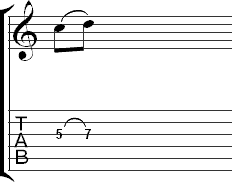
or with a slur and 'H' above the slur:
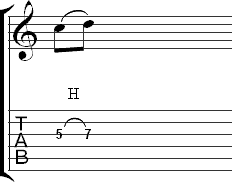
Hammer-on from Nowhere
It is also possible to hammer-on without plucking the string first. This is known as a hammer-on from nowhere. A hammer-on from nowhere is indicated with a small curved line before the note.
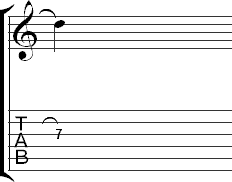
Pull-offs
A pull-off is played by first playing a note, then pulling the string down slightly as you release the note. This releases the initial note to a lower-pitched fretted note or an open string, making it sound. Pull-offs are indicated with a slur:
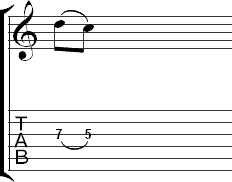
Sometimes a 'P' may be placed above the slur:
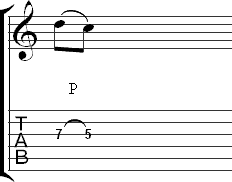
Combining Hammer-ons and Pull-offs
Multiple hammer-ons and pull-offs are possible. This is indicated by placing a curved line over the affected notes:
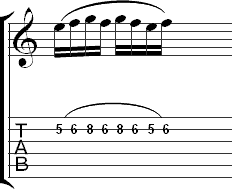
It is possible to place an 'H' or 'P' above each hammer-on or pull-off, but this is generally not done because it would clutter the music.
Trills
Trills are a rapid alternation between two notes using a combination of hammer-ons and pull-offs. A trill is indicated with the letters 'tr' and a wavy line above the trilled notes. The notes to be trilled are shown with a lower note and a higher note in parentheses. Refer to the music notation for the rhythmic duration of the trill.
